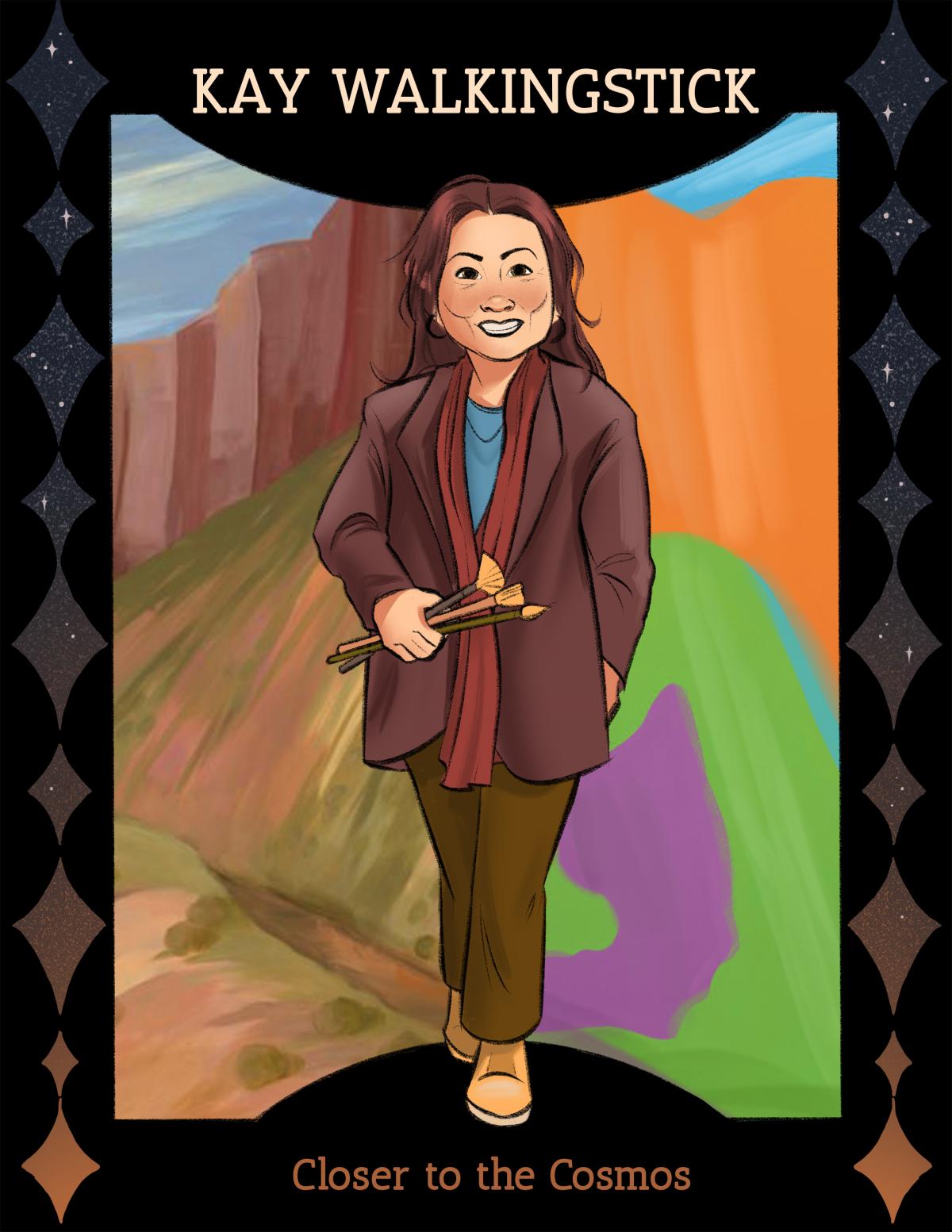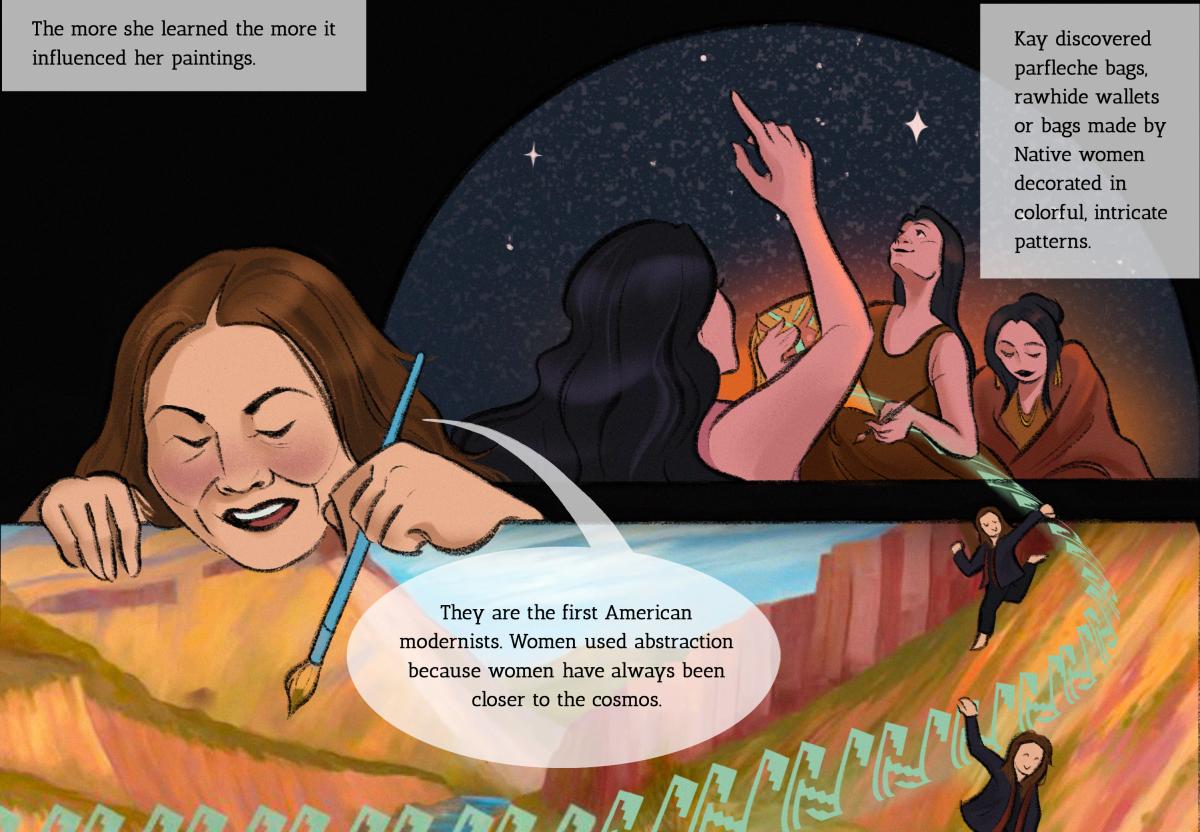
Kay WalkingStick, a citizen of the Cherokee Nation, first began exhibiting in the late 1960s and is still creating new artworks today. She is celebrated for her powerful landscape paintings, which imbue depictions of place with spiritual significance and cultural memory.
The comic, “Kay WalkingStick: Closer to the Cosmos,” illustrated by Madi Wong, a student at the Ringling College of Art and Design, begins with WalkingStick’s childhood and moments of connection to her life as an artist. Early images show her in the back of her family’s car, driving through upstate New York, when Kay, looking out at the rolling green hills exclaims, “Oh, I wish I had my brushes.” The child of a Scotch-Irish mother and a Cherokee father who separated before Kay was born was always encouraged by her mother to be proud of her Native heritage. “Stand up straight, Kay, you’re a Cherokee,” her mother would remind her. The twin themes of confidence and encouragement weave throughout the text, as does the idea of duality, especially when it comes to taking a close look at themes in Kay’s later works.
These early stories and images give way to Kay’s development as an artist, her decision to marry early and have children, and continue her painting despite push-back from men who ran the galleries. “We have too many women artists already,” one gallery owner told her. But, nevertheless, she persisted. Kay goes on to create colorful acrylic abstractions in the 1970s and 1980s, including Two Women II, in SAAM’s collection. As her work evolves, Kay returns to questions about her Native heritage, and begins to create works that address those themes—often working in diptychs that capture the landscape as well Native themes and patterns, such as Orilla Verde at the Rio Grande, also recently acquired by SAAM. At one point, she uses her hands to apply paint to certain works, a detail that Madi captures in her depictions of the artist at work.
Madi illustrates Kay WalkingStick’s life and work with admirable verve, portraying the tough moments as well as those worthy of celebration. The comic draws to a close as Kay works more and more with Native themes and discovers rawhide parfleche bags that that were made by women and decorated in abstract patterns. She says, “[Native women] are the first American modernists. Women used abstraction because they have always been closer to the cosmos,” a phrase that became the title of the comic.
The title captures not only the life of Kay WalkingStick and the Indigenous women artists that came before her, but also Madi Wong’s illustrations that reach for the stars and always hit their mark.
This comic is part of a series Drawn to Art: Tales of Inspiring Women Artists that illuminates the stories of women artists in the collection of the Smithsonian American Art Museum. Inspired by graphic novels, these short takes on artists’ lives were each drawn by a student-illustrator from the Ringling College of Art and Design.
We invite you to read the comic and share with your friends and young people in your life.




















